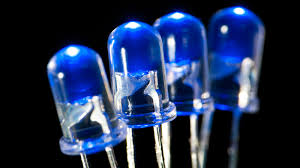This in our view is the future of LED dimming in restaurants, bars and entertainment venues. This technology can only improve over time and closely replicate the warm glow of a dimmed halogen lamp. This Megaman Dim to Warm is very impressive.
led
LED Flicker

Around half of domestic and office LEDs have been found to have higher flicker rates than alternative sources, a report by the Society of Light and Lighting has revealed.
Those in procurement need to be very careful to include low flicker requirements in their specifications, and all specifiers need to be aware that if LED products are substituted by contractors or suppliers then flicker needs to be considered.
The SLL report also says that specifiers of LED lighting should similarly be wary of cool colour temperatures. ‘Other studies have shown that blue light can mimic daylight and confuse the brains of humans and animals into delaying melatonin production, potentially disrupting the sleep and the circadian cycle’. The report concludes that designers should therefore avoid LEDs with a high Correlated Colour Temperature (CCT). LEDs in streetlights should be diffused or recessed to reduce dazzle.
The report – on the topic of human responses to LED lighting and produced by Public Health England – concludes that the human reaction to light sources should be a primary factor in deciding to deploy them, not just efficiency or cost.
The report was intended to provide data on the positive and negative effects of exposure to light from LED light sources.
Researchers found that LED solutions are valid energy efficient options in comparison to other available light sources, with stated performance that is generally accurate in comparison, and that none of the LEDs tested presented a risk of retinal damage with proper use.
It also concluded that designers should consider the LED as part of the whole light fixture and the environment in which it is used to determine if it is suitable – a factor that is as important as the price of the LED or its efficiency.

Cost was shown to have no significant impact on the flicker or colour rendering of the lamp, but there are potential issues surrounding LED lights which must be factored in when deciding where they should be used, and what kind of fixture is most appropriate for them.
Jeff Shaw, president-elect of the Society of Light and Lighting, told Lux Review: ‘This report is a valuable collection of data that will be extremely useful in enabling both the public and private sector to make informed choices when looking to procure LED lighting solutions and promote energy efficiency.
‘LED technology has advanced enormously in the last decade, but there are still a lot of things to consider when deciding which solution is best for you, and how to deliver it. What this report highlights is the need to consult a properly trained and qualified designer or engineer using the latest guidance to get the most out of an LED solution, and to ensure it is the best choice for people and the environment.’
Source: Lux Review 19th/May/2016
Lumen output claims are ‘misleading’, rules German court
The Austrian lighting manufacturer Planlicht has been censured by a German court for misleading claims for its LED fixtures’ performance.
The legal action is being widely seen as test case in the lighting industry over the validity of the data included in specification sheets.
The architectural luminaire maker XAL – which took the case against rival Planlicht – described the ruling by the Frankfurt Higher Regional Court as ‘a major step towards greater transparency’ in the industry.
The judges ruled that the advertising of LED luminaires with lumen values that refer to the LED itself and not to the luminaire is not permitted – especially when it is not clear to the customer what the value is actually referring to. A general reference in the descriptive text ‘lumen information = circuit board output’ is not sufficient for this. When advertising LED fittings, a power consumption that is lower than the actual power consumption of the lamp may not be indicated. Finally, the court ruled that only luminaires that actually have a Unified Glare Rating of less than 19 may be advertised as such. If other luminaires in the same family do not meet this criterion, they can’t be included in the description.
Planlicht CEO Felicitas Kohler says the company has been unfairly singled out and that the court ruling was based on out-of-date sales literature and practices.
‘The judicial decision is based on a state of facts from 2013, when most lighting manufacturers published LED information on the luminous flux and power requirements of the LED boards. XAL decided to take legal action against the competitor they fear most and let all the others go their ways.
‘In fact, for all manufacturers of architectural luminaires, there is the challenge in making catalogues provide some overview. To detail all the technical specifications is not as easy as illustrated by you in your article for XAL, who displays luminous flux and power consumption data for only one specific light colour – for the most efficient, not for all.
‘On the fast-improving LED market, Planlicht decided to switch to net figures of luminous flux and power consumption of lighting systems and invested in our own light laboratory. This all happened long before the court decision in Frankfurt, which was based on a two-year old catalogue. So it had no effect on Planlicht; there was no penalty, just the order not to use the old catalogue.’
In a statement, XAL said: ‘Lighting designers and specifiers need exact information regarding lumen output and system capacity so that they can make sound decisions when selecting lighting. Especially when using high-quality LED luminaires, lighting designers expect to be able to rely on the information provided by the manufacturer.
‘But in fact, this information is not provided transparently in the print and online catalogues of some manufacturers. In many cases, the lumen output refers to the LED or circuit board itself, and is therefore substantially higher than the actual luminous flux of the luminaire.
‘But this value is not relevant for specifiers because it does not represent the visible light output of the luminaire itself. The problem is exacerbated by the fact that the correct power consumption is also not always taken into account, but the power consumption without electronic ballasts. These levels are lower than the actual power consumption. This distorts the efficiency level, which is indicated in lumens/watts.
‘Such misleading information in catalogues poses serious risks for customers. They may be faced with lux levels that are too low, circuit breakers with insufficient capacity, and assumed efficiency levels that are not true.
‘To minimise such risks for customers and to prevent lights from being selected on the basis of incorrect information, [we] decided to take legal action against Planlicht based on a particularly clear case of misleading catalogue information. In its own catalogues, XAL provides a high level of transparency and wants customers to be able to fairly compare offerings across the industry and to be able to accurately plan their lighting systems.’
XAL chief Harald Dirnberger told Lux Review: ‘We’re confident that this ruling will set an important precedent and will contribute to a greater level of transparency in the entire lighting industry. As a manufacturer of high-quality lighting solutions, we see it as our duty to provide our customers with absolutely accurate information as a basis for their planning’.
Source: Lux Review (6/4/2016)
To read more click here
Interesting Engineering » Technology » Dyson’s new LED lightbulb has a lifespan of 37 yearsDyson’s new LED lightbulb has a lifespan of 37 years
 Watch movie online The Transporter Refueled (2015)
Watch movie online The Transporter Refueled (2015)
A hefty amount of energy goes into lighting our homes, workplaces and other public areas. According to United States Energy Information Administration, the number is actually around 15% of all energy generated in the U.S. (commercial and residential) that goes into illuminating our worlds. One of the best contributions to bring this number down and start decreasing power consumption on this front is the integration of LED lights, improving not only on the power usage, but lifespan, environmentally friendly and safety have all been viable benefits. Now has come the time where we gathering key learnings from other sciences, to improve on LEDs even further.
Dyson is a trailblazer on this front. Sure it may be easy to overlook this brand known mostly for their vacuum cleaners, but ambitious among technological improvement nonetheless. Their astute engineering took the form of their CSYS Task Light, powered by a bulb that lasts almost 4 decades. They achieved this by integrating new cooling system for the bulb allowing them to not overheat, usually the demise of standard LEDs. Their cooling design inspired by satellite composition, alters the traditionally round heat sink to an elongated horizontal heat pipe made from aluminum that does a more efficient job drawing away heat, protecting the LED’s phosphorus coating. The design of the lamp itself has 360 degree rotation and sliding arms for easy light adjustment and focus. With a consistent daily use of about 12 hours, the bulb will last for about 37 years before the light source starts to dwindle.
